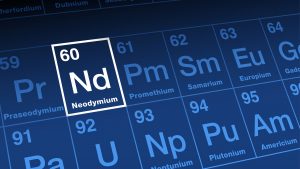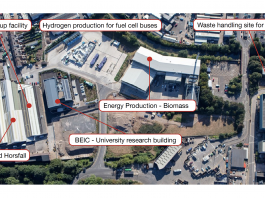Researchers from the University of Cambridge have discovered a new way to create a possible replacement for rare earth magnets.
In collaboration with colleagues from Austria, University of Cambridge researchers have found that tetrataenite, a ‘cosmic magnet’ that takes millions of years to develop naturally in meteorites, can potentially be used instead of rare earth magnets.
Previously, attempts to make tetrataenite in the laboratory have depended on extreme and impractical methods, but this is set to change with the researcher’s use of the common element phosphorus. By using phosphorus, there is a possibility to produce tetrataenite artificially and at scale, without any specialised treatment or expensive techniques.
The article, titled ‘Direct formation of hard-magnetic tetrataenite in bulk alloy castings,’ is published in the journal Advanced Science. Cambridge Enterprise, the University’s commercialisation arm, and the Austrian Academy of Sciences have filed a patent application for the technology.
Why must a rare earth magnet replacement be sought?
To build a zero-carbon economy, a supply of high-performance magnets is necessary. Currently, the best permanent magnets available on the market contain rare earth elements, which despite their name, exist in abundance in the Earth’s crust.
However, there is an issue with securing a reliable supply of rare earths, as China controls the majority of global production. It was reported that 81% of rare earths worldwide were sourced from China in 2017. There are other countries that mine REEs, such as Australia, but with increasing geopolitical tensions with China, the current rare earth supply could be at risk.

Professor Lindsay Greer, from Cambridge’s Department of Materials Science & Metallurgy, stated: “Rare earth deposits exist elsewhere, but the mining operations are highly disruptive, as you have to extract a huge amount of material to get a small volume of rare earths.
“Between the environmental impacts, and the heavy reliance on China, there’s been an urgent search for alternative materials that do not require rare earths.”
What are the current issues with tetrataenite production?
One of the most promising alternatives for permanent magnets is tetrataenite, an iron-nickel alloy with an ordered atomic structure. The material forms over millions of years as a meteorite slowly cools. This offers the iron and nickel atoms enough time to order themselves into a particular stacking sequence within the crystalline structure, resulting in a material with magnetic properties similar to those of rare earth magnets.
In the 1960s, tetrataenite was artificially formed by blasting iron-nickel alloys with neutrons, allowing the atoms to form the desired ordered stacking. However, this technique is unsuitable for mass production.
“Since then, scientists have been fascinated with getting that ordered structure, but it’s always felt like something that was very far away,” said Greer, who also led the research.
Over the years, many scientists have attempted to make tetrataenite on an industrial scale, but this has not been possible.
Using phosphorous as a potential alternative for tetrataenite production
Now, Greer and his colleagues from the Austrian Academy of Sciences, and the Montanuniversität in Leoben, have found a potential alternative that avoids these extreme methods.
The team studied the mechanical properties of iron-nickel alloys containing small amounts of phosphorus, which is present in meteorites. Inside these materials were a pattern of phases that indicated the expected tree-like growth structure called dendrites.
“For most people, it would have ended there: nothing interesting to see in the dendrites, but when I looked closer, I saw an interesting diffraction pattern indicating an ordered atomic structure,” said first author Dr Yurii Ivanov, who completed the work while at Cambridge and is now based at the Italian Institute of Technology in Genoa.
Initially, the diffraction pattern of tetrataenite looks like the structure expected for iron-nickel alloys, namely a disordered crystal not of interest as a high-performance magnet. Ivanov’s closer look identified the tetrataenite.
According to the team, phosphorus allows the iron and nickel atoms to move faster, enabling them to form the necessary ordered stacking without waiting for millions of years. They were able to accelerate tetrataenite formation by between 11 and 15 orders of magnitude by mixing iron, nickel, and phosphorus in the right quantities. This meant the material was able to form over a few seconds in simple casting.
“What was so astonishing was that no special treatment was needed. We just melted the alloy, poured it into a mould, and we had tetrataenite,” said Greer. “The previous view in the field was that you couldn’t get tetrataenite unless you did something extreme, because otherwise, you’d have to wait millions of years for it to form. This result represents a total change in how we think about this material.”
Future work with magnet manufacturers
Although this method is promising, more work is needed to decide whether it will be suitable for high-performance magnets. The team is hoping to collaborate with major magnet manufacturers to determine this.
The results of this study could change the views on the duration of tetrataenite development.









